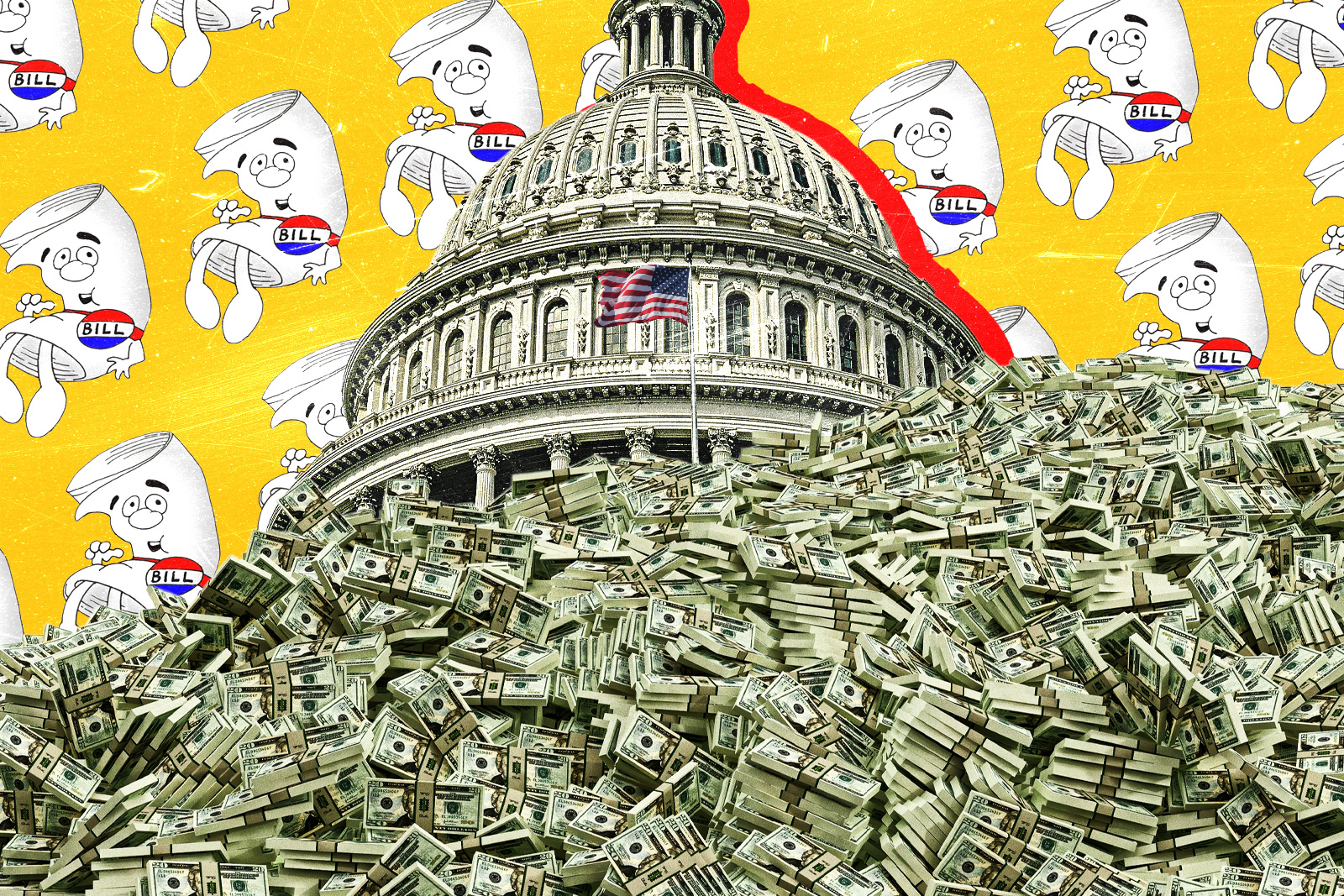
Politics
A ‘Policy Agenda’ Explainer
As the midterms approached, political commentators at home and abroad wondered how the elections might affect President Biden’s agenda. Some media outlets even suggested that in this election, “Biden’s agenda hangs in the balance.” Now that we stand on the other side of the midterms, much remains to be seen as to how the results will affect Biden’s agenda. But, before we ask, “How will the results affect Biden’s policy agenda?” we should be asking, “What is the policy agenda?” At a time when the “policy agenda” is being frequently discussed, let’s refresh our understanding of this piece of political jargon.
The policy agenda, as simply as I can put it, is the list of issues currently or intended to be deliberated on by political decision-makers. Political decision-makers are confined by jurisdictions. For this reason, policy agendas will differ according to the scope of a ruling body’s responsibilities: federal, state, and local governments all have different policy agendas. The policy agenda, importantly, is not the same as public opinion. The two are certainly related, but for an issue to be on the policy agenda, it must be on the lips of legislators, not merely on the minds of voters.
An issue can make it onto the agenda by catching the attention of policymakers. One goal of organizers and advocates is to transform an issue into new or revised policy; however, it is always difficult to draw a causal pathway from advocacy efforts to legislation. Some constituencies have an easier time doing this than others. The policy agenda represents an important achievement in the life of an issue. However, it is not the final destination because advocates hope an issue is not merely discussed by decision-makers but ultimately becomes law.
To get an idea of what is on the federal government’s policy agenda, you can visit congress.gov. If you can get past the lack of aesthetic effort, you can navigate through endless archives of House and Senate sessions. Additionally, visitors can access lists of bills on the floor, the texts of those bills, and live streams of the deliberation on those bills. We can see that the policy agenda is made up of what politicians are talking about, not what they say they are talking about, or what citizens hope they are talking about.
The political agenda is finite: there are a limited number of politicians, with a limited number of sessions, and a limited number of hours to make informed decisions. Stephen Hilgartner and Charles Bosk offer the incredibly helpful concept of “carrying capacity” to explain the constraints of a given political actor or institution. They note that a politician is constrained by “personal time, staff time, budget, [and] ‘free media’ opportunities,” and Congressional Committees are limited by “hearing time, size of staff, budget, [and] political costs of actions.”
Outside of ideological reasons why a politician may not act on a particular issue, carrying capacity offers a compelling explanation for the logistical reasons why Congress does not solve every problem that comes to its attention. Because it must be highly selective in what it allows to take up its limited time, money, and attention, reaching the policy agenda is fiercely competitive. This leads to the important question of how an issue can make it onto the policy agenda.
Perhaps the most formal means of affecting the policy agenda are direct lobbying and campaign donations. These are highly institutional methods of getting issues decided by the government, most frequently employed by the well-heeled. Lobbying is expensive, which is why those offered this direct access to the levers of power are often extremely wealthy. In his book, The System, Robert Reich argues that powerful advocates for the issues of anti-regulation and tax breaks, namely large corporations, have become a disproportionally influential voice in politics through lobbying and campaign donations.
He laments the effectiveness of this strategy by documenting the enormous financial gains made by the corporations involved. He notes “Big Oil spends some $150 million a year backing pliant politicians” and, in return, receives “$2.5 billion a year from the government in special benefits.” Reich notes Pfizer, GE, and Chevron, who in 2018 contributed a total of $49 million to Republicans, receiving a total of $64 billion in tax cuts. Reich argues that, for the wealthy, access to the policy agenda is within immediate reach.
Other groups, without comparable institutional strength, must pursue other means of convincing Congress to spend their time and money on an issue. Three ways are problem definition, causal stories, and social construction. As has been frequently observed, social problems are not easily identifiable adverse realities in society. Stephen Hilgartner and Charles Bosk contend that “social problems are projections of collective sentiments rather than simple mirrors of objective conditions in society.” John Kingdon, a highly-cited scholar of the policy process, notes that objective “indicators are not simply a straightforward recognition of the facts. Precisely because indicators have such powerful implications, the methodology by which the facts are gathered and the interpretations that are placed on these facts become prominent items for heated debate.”
Selecting a condition of society and problematizing it is a highly contentious activity because it bears immediate relevance to one of the central aims of policy: problem-solving. Once a problem has been defined, citizens are entitled to call on their government for help. Less-resourced advocates can be successful at having their issue enter the policy agenda if they can identify a condition in society, define it as a problem, convince enough people of the problem, and continue this process until sufficient social momentum has been built to catch the attention of sympathetic lawmakers.
A crucial but distinct element of problem definition is creating convincing causal arguments. A problem is not likely to gain social momentum if it is impervious to human efforts. For this reason, it is imperative that while advocates define a problem, they build in the assumption or explicit proclamation that human effort can be an effective intervention. Causal theories can challenge or legitimate the status quo, identify villains, recruit fixers, and generate new victimized coalitions. Much effort is exerted by advocates in identifying blameworthy causal agents in some defined social problem. Take for example the efforts of a relatively small, but highly passionate group of individuals whose petition blamed California’s ills on Governor Gavin Newsom so successfully that it led to an unsuccessful statewide referendum.
Finally, Anne Schneider and Helen Ingram point out that social construction plays a crucial role in what makes it to the policy agenda. Social construction “refers to the cultural characterizations or popular images of the persons or groups whose behavior and well-being are affected by public policy.” Social construction, or framing, is not always the most available tactic for poorly resourced advocacy efforts because control of social construction is often exerted by powerful, mainstream cultural views.
One successful attempt to create a more positive social construction is found in the civil rights movement. Pre-civil rights movement, African Americans were both politically weak and viewed in a negative light. In order to convey a new image of African Americans to the broader public, Martin Luther King Jr. “deliberately sought out sights to protest where he was reasonably sure local authorities would react violently, thus generating media attention and public sympathy for protestors from outside parties.” At the cost of life, such a bold strategy proved politically effective.
Historian Harvard Sitkoff writes, “the brutal outrages committed by white supremacists and by Southern law-enforcement officers forced policymakers to take actions that they would have preferred avoiding or postponing.” Not long after the showdowns, the Voting Rights Act passed. King’s strategy to construct African Americans as brutalized victims of white supremacy successfully affected policy.
Now, I will turn my attention to the contemporary issue of the Ethnic Studies curriculum in California.
Governor Newsom signed AB 101 into law on October 8, 2021, making Ethnic Studies a high school graduation requirement. Prior to its passing as a statewide mandate, many Orange County school districts considered making Ethnic Studies a high school graduation requirement. Advocates employed all three of the previously mentioned strategies in order to keep it on the agenda. They defined the problem of an exclusive society, with adverse educational outcomes for students of color. Advocates have brought this defined problem under the control of human intervention by proposing the causal theory that Ethnic Studies have a direct impact on the educational outcomes of students of color.
They do so by citing research conducted by Thomas Dee and Emily Penner that found the Ethnic Studies curriculum assigned to high school freshmen in San Francisco, “increased ninth-grade student attendance by 21 percentage points, GPA by 1.4-grade points.” In a county where students of color not only have lower academic outcomes but are also more chronically absent than their white counterparts, this problem with its attached causal solution carries significant weight.
Finally, advocates have done their best to socially construct ethnic minorities as fellow Americans, fully entitled to their fair share of historical representation in the classroom. Journalist Hosam Elattar reports that at a school board meeting, one parent said, “America is a salad bowl, not a melting pot and our kids should learn about all of its parts.” By defining the problem of an exclusionary society, locating, and justifying part of its remedy in Ethnic Studies, and then promoting the idea that Ethnic Minority history is American history, advocates made a compelling case to keep Ethnic Studies on the agenda.
Though advocates played a pivotal role in keeping Ethnic Studies on the policy agenda, their efforts were assisted by the “focusing event” of George Floyd’s murder. In Anthony Down’s model of the “issue-attention cycle,” Floyd’s murder ignited the “Alarmed Discovery and Euphoric Enthusiasm” stage in which, “the public becomes both suddenly aware of and alarmed about the evils of a particular problem.” This alarm and public enthusiasm open up a “policy window,” a critical period in which advocates and lawmakers have the best opportunity to produce policy. Floyd’s murder opened a policy window that had been shut for almost two decades.
The push for Ethnic Studies as a high school requirement began almost 20 years ago when Luis Alejo, then an Assembly Fellow, introduced a bill that was promptly vetoed by the governor. All these years later, Alejo reflected on the timing of its recent passage and wrote, “Sometimes these bills need the right moment to win approval, and AB 331 had all the stars aligned in its favor this year.” Echoing a similar sentiment, the bill’s author, Jose Medina called the protests of 2020, “a moment of reckoning on education.”
Alejo and Medina both understand that Ethnic Studies’ final push onto the agenda and into law was propelled by the murder of George Floyd. Focusing events and advocates coexist symbiotically; focusing events provide necessary raw material, and advocates provide productive structure. Just as Three-Mile Island, an unpredictable event, served as an impetus for anti-nuclear mobilizing, so the murder of George Floyd, an event out of the control of advocates, was an incalculable aid to the Ethnic Studies curriculum movement: a movement that recognized a policy window opening seized public outrage of a nationwide focusing event and channeled it into political pressure for lawmakers to reconsider the long-ignored issue of Ethnic Studies as a high school requirement.

